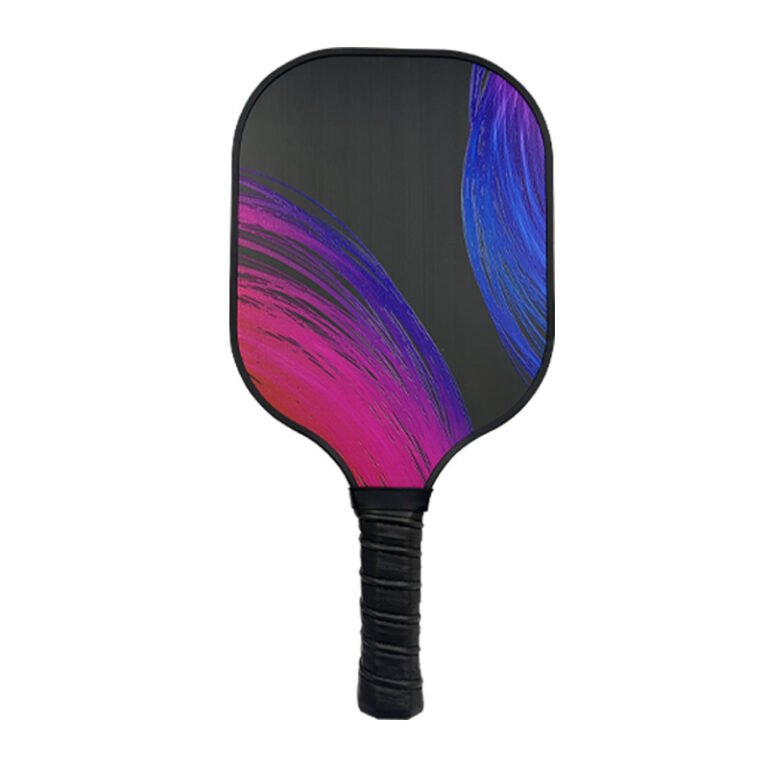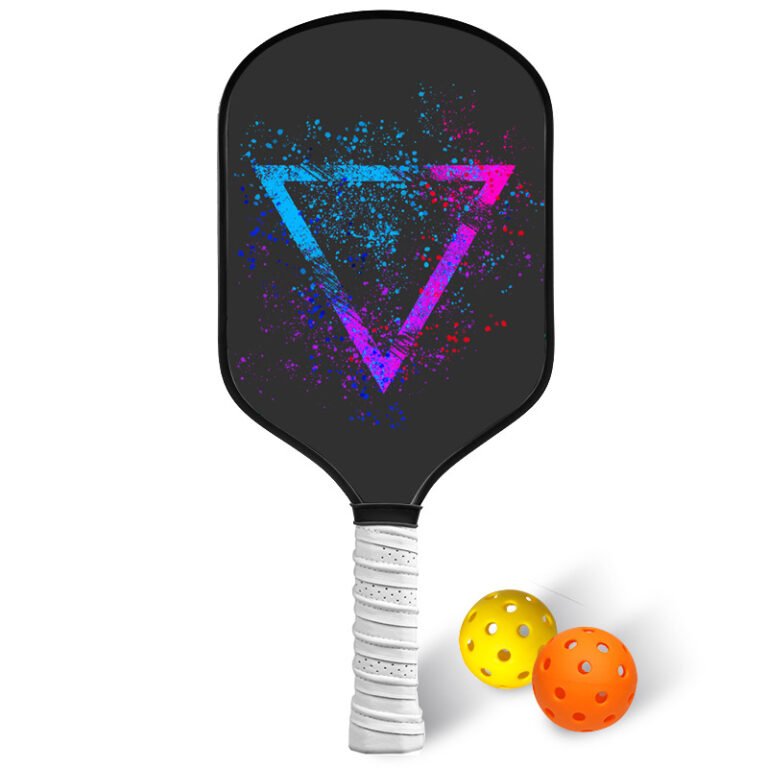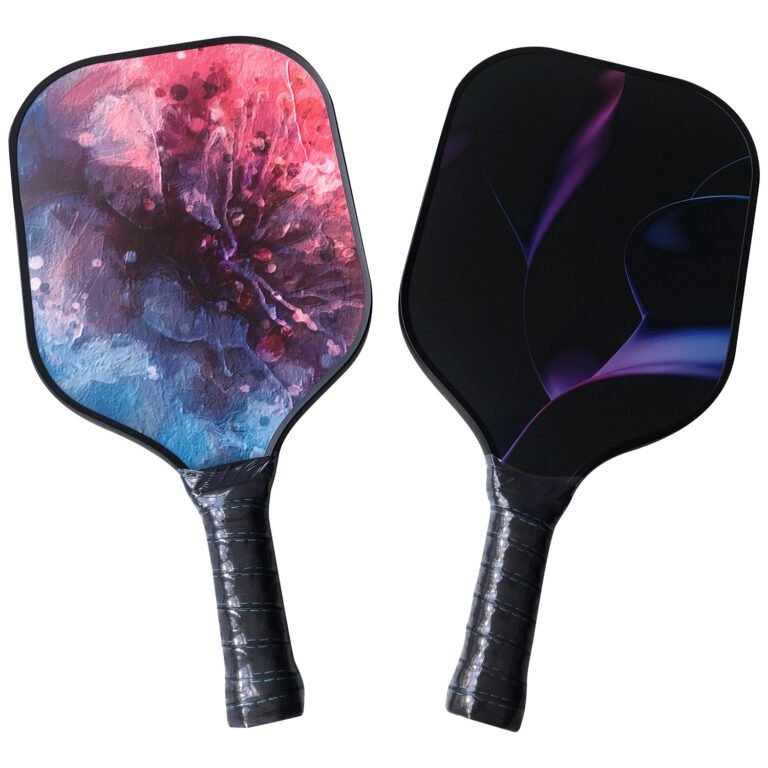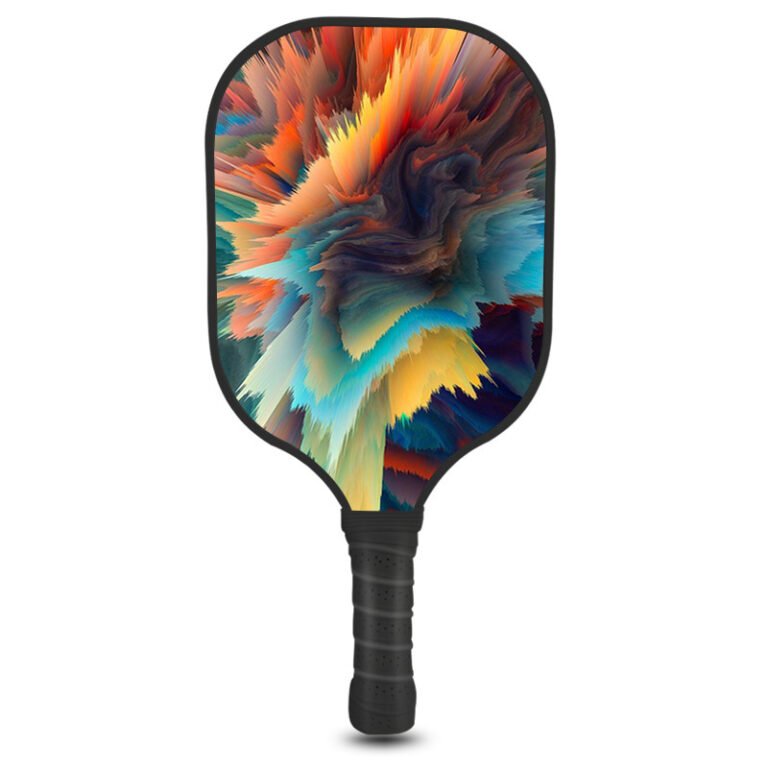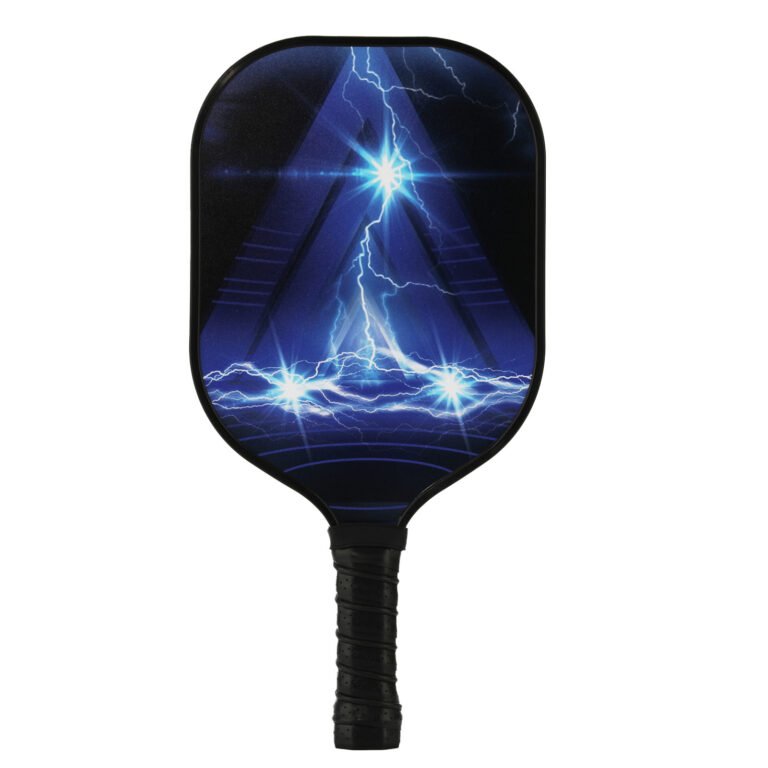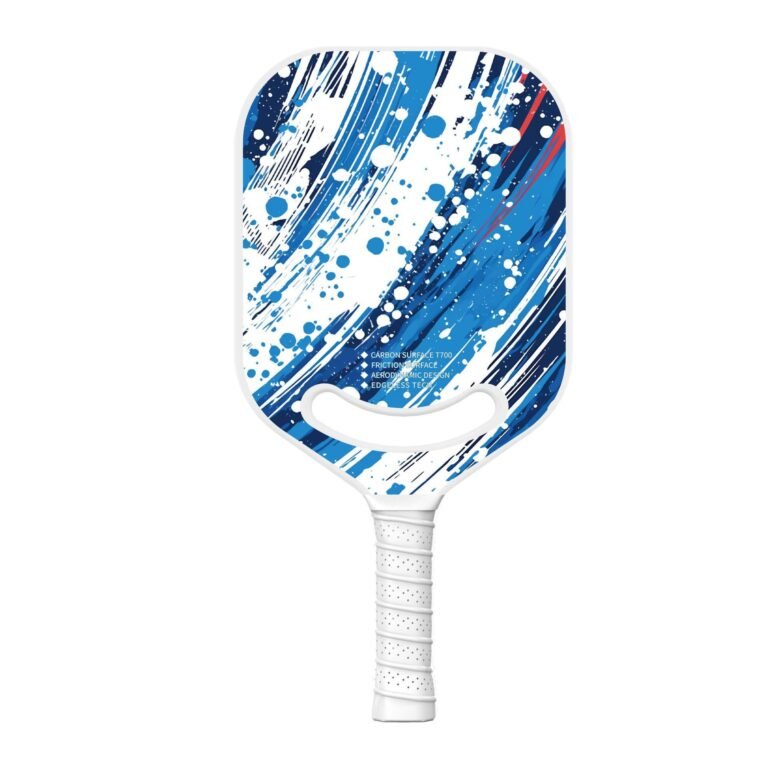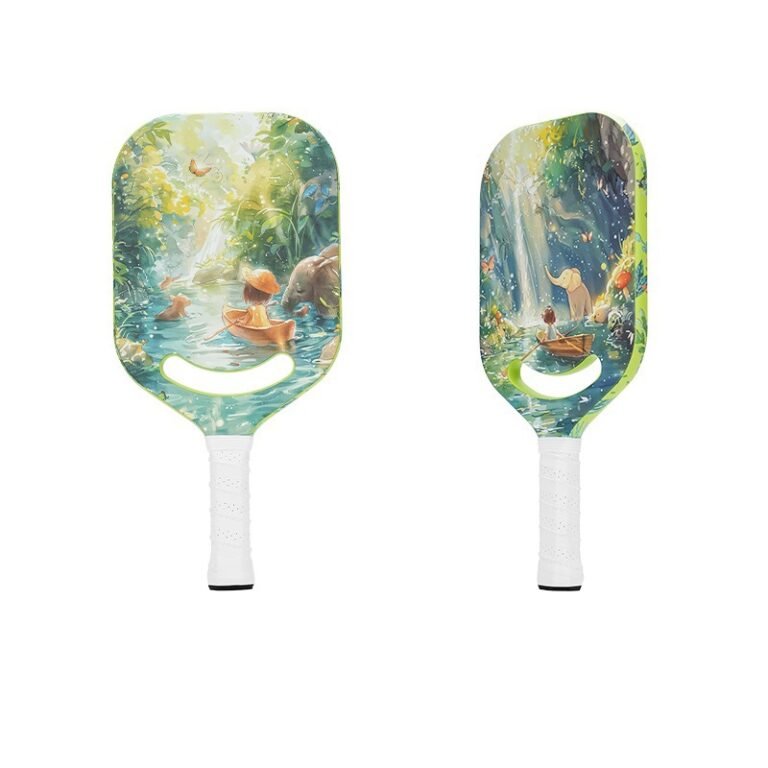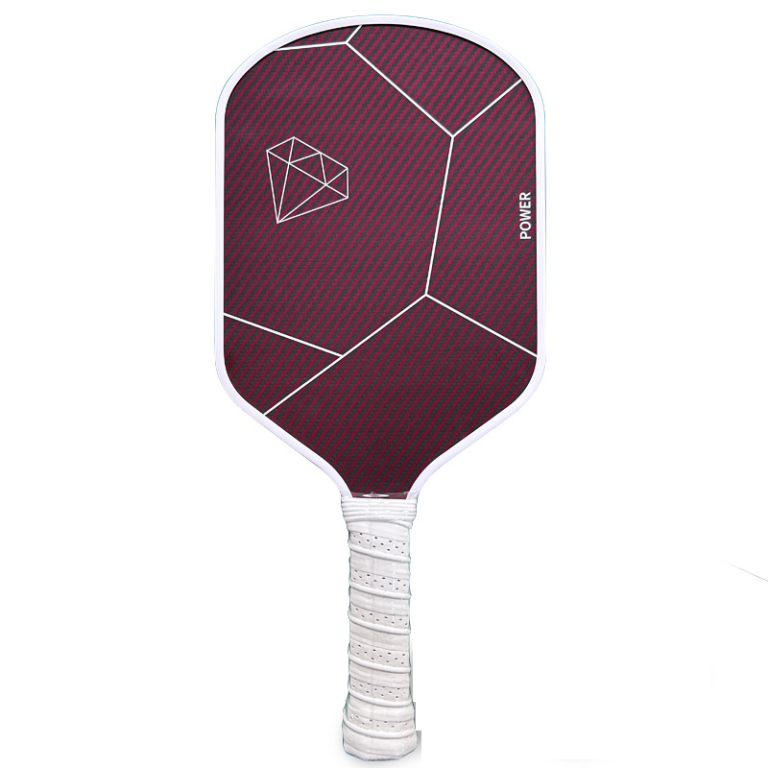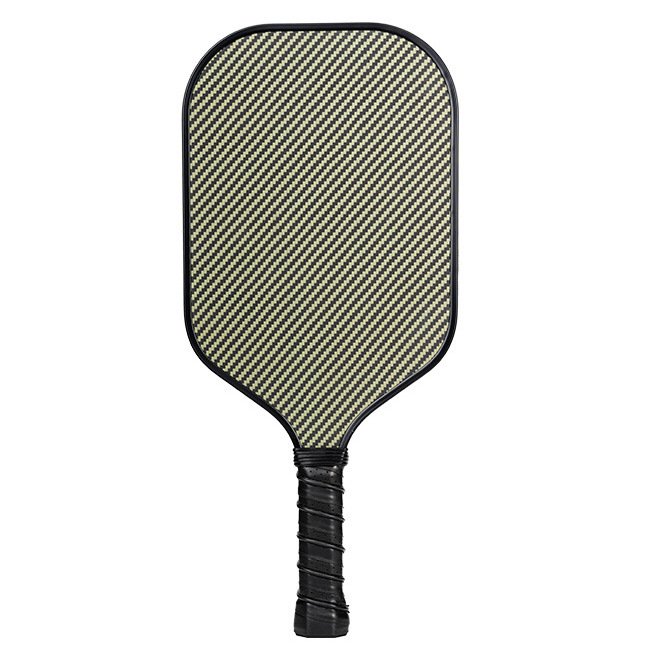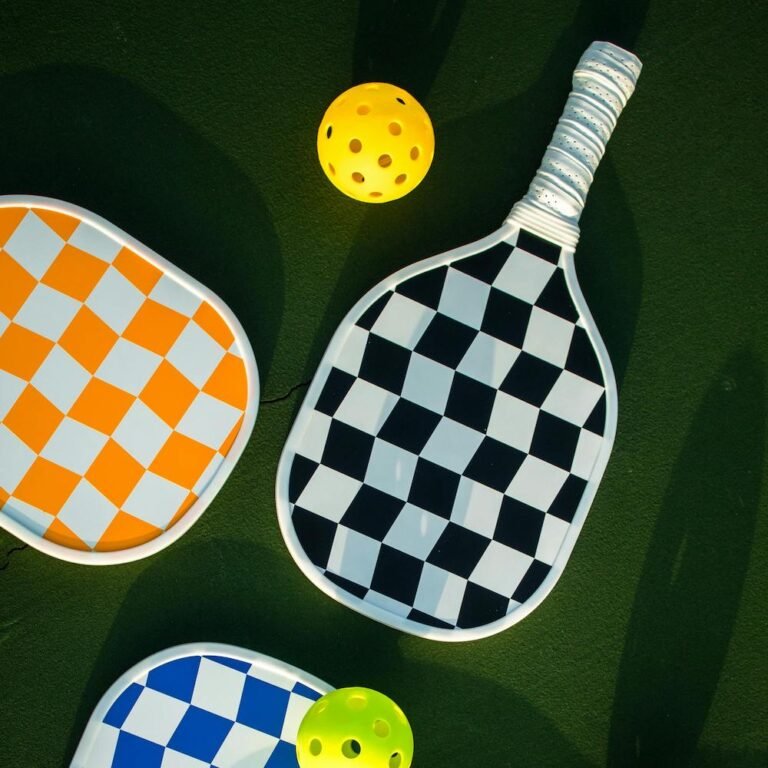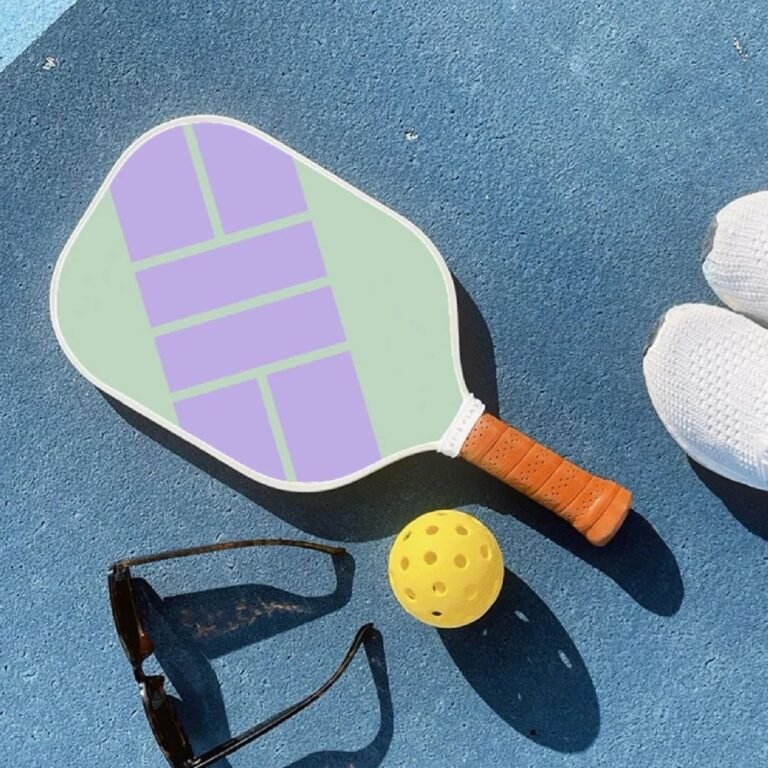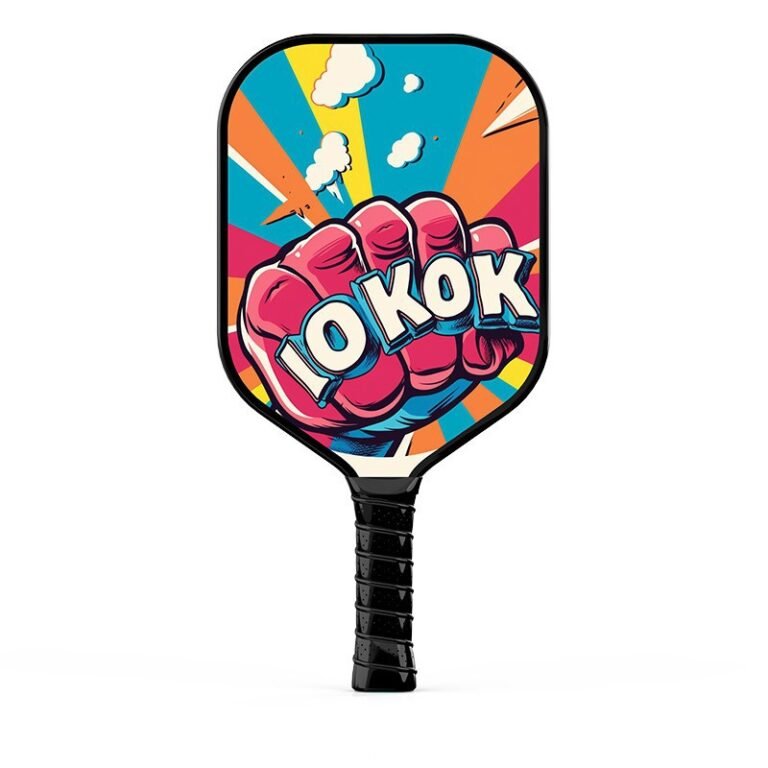Your Trusted Pickleball Paddle Manufacturer
Or Check Out best selling styles below
Hot Pressed Paddle
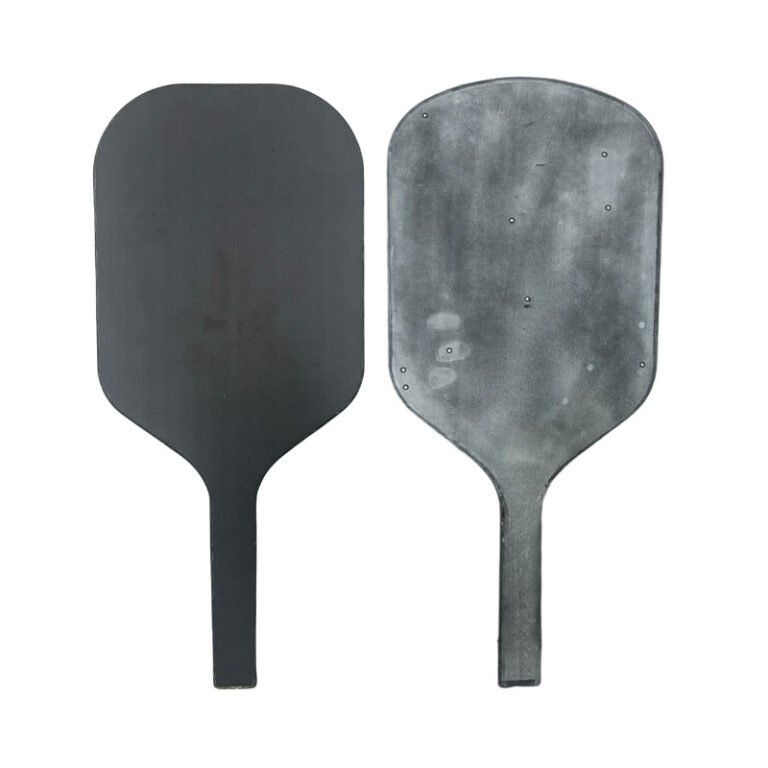
What it is?
- The materials are cut and aligned according to design requirements, ensuring the fiber layers meet mechanical needs. A honeycomb core is used as a structural layer, with EVA foam added to the edges to enhance lightness and stability.
- The prepared paddle is placed into a mold, where high-performance epoxy resin is applied. The resin cures under high temperatures, providing excellent bonding strength and reinforcing the paddle’s rigidity and toughness.
Advantages:
- High Strength and Durability: The hot pressing process ensures fibers and resin fully integrate, providing superior resistance to compressive and tensile stress.
- Elastic Stability: The process results in evenly distributed materials, ensuring excellent rebound and elasticity.
- Lightweight: High-performance materials (e.g., carbon fibers, honeycomb core) and optimized craftsmanship reduce paddle weight.
- Impact Resistance: The structure formed by hot pressing is more robust, enabling better performance in high-impact conditions.
- Design Versatility: This method accommodates complex shapes, catering to varied player preferences (e.g., paddle shapes, thickness, or hardness).
Target User:
- Players requiring high stability and precision.
- Suitable for professionals and competition use.
Disadvantages:
- Higher cost.
- More complex manufacturing process.
Cold Pressed Paddle

What it is?
- Carbon fiber, fiberglass composite materials are combined with resin to create the paddle face material.
- The paddle face material is layered with a core material (e.g., PP honeycomb) on both sides to ensure structural integrity.
- Reinforcement layers are added to enhance the elasticity and durability of the paddle.
- The assembled materials are placed into a cold press machine, where uniform pressure (usually several tons) is applied to ensure tight adhesion between layers.
Advantages:
- Cost-Effective: Equipment and material costs for cold press manufacturing are lower.
- Soft Feel: Cold-pressed paddles reduce vibration during play, offering a softer feel.
- Flexible Manufacturing: The cold pressing process allows easy adjustments to the material layers.
- Lightweight: Cold-pressed paddles are generally lighter than hot-pressed paddles, enabling quicker swings and better control.
Target Users:
- Budget-conscious consumers.
- Players who prefer easy control and comfortable hitting.
- Recreational players.
- Amateur competition players.
Disadvantages:
- Limited elasticity and rebound performance.
- Reduced ability to withstand high-pressure impacts.
Hot Pressed One-Piece Paddle
What it is?
- Fibers are cut and aligned according to design requirements, with a honeycomb core as the structural layer.
- The prepared paddle is placed into a mold, which is crafted from either metal or steel, designed to form an integrated paddle frame.
- Materials are precisely layered in the mold, and high-performance epoxy resin is used to bond them together. The resin cures under high temperature, creating a strong and durable structure. The paddle’s frame and face are molded simultaneously, eliminating the need for additional joins.
Advantages:
- Integrated Structure and Stability: The one-piece design ensures better structural integrity and stability, improving durability and overall performance.
- High Strength and Durability: Enhanced bonding improves paddle strength and extends lifespan.
- Lightweight and Ergonomic Design: Reduces excess weight, making the paddle easier to handle. Suitable for both recreational and professional play, improving control and precision.
- Premium Appearance: A seamless design provides a smooth finish and allows for more custom branding and graphics, boosting product appeal.
Target Users:
- Budget-conscious consumers.
- Consumers seeking higher value.
Disadvantages:
- Higher production costs.
- Requires advanced manufacturing techniques.
Kevlar Pickleball Paddle
Advantages:
- High Strength and Impact Resistance: Provides excellent durability against wear and tear.
- Lightweight Design: Ensures better maneuverability and reduced fatigue.
- Good Shock Absorption: Reduces vibration during play for a smoother feel.
- Durable: Ensures long-term usage.
- Noise Reduction: Helps minimize the noise generated during gameplay.
Target Users:
- Professional players.
- Players involved in long-duration training.
- Players seeking durable paddles.
Disadvantages:
- High cost.
- Complex manufacturing process.
T700 Carbon Fiber Paddle
What it is?
- A pickleball paddle made from T700 carbon fiber.
- T700 carbon fiber is a high-performance carbon fiber material.
- Pickleball paddles made of T700 carbon fiber are typically lighter, more durable, and offer better power transmission and stability. This material provides a superior hitting feel and control while reducing vibrations, which helps improve players’ performance.
Advantages:
- High strength and impact resistance
- Lightweight design
- Excellent shock absorption
- Strong durability
- Reduced noise during ball contact
Target Users:
- Advanced or professional players
- Competitive players
- Players training or competing for extended periods
- Performance-focused players
Disadvantages:
- High price
- Stiffer handle
3k Carbon Fiber Paddle

What it is?
- A pickleball paddle made from 3K carbon fiber material.
- The “3K” in 3K carbon fiber refers to a tow containing 3,000 carbon filaments, woven into a grid-like structure.
Advantages:
- Balanced performance: The weaving structure gives the paddle face both flexibility and strength.
- Improved hitting control: The 3K carbon fiber structure enhances power transmission during hits.
- High durability: The material and weaving process ensure resistance to impact and aging.
- Relatively lightweight.
- Excellent vibration control.
Target Users:
- Professional or experienced players
- Advanced players
- Players who enjoy powerful hits
- Players seeking high durability
Disadvantages:
- Higher cost
- Heavier than other materials
- Reduced flexibility
12k Carbon Fiber Paddle
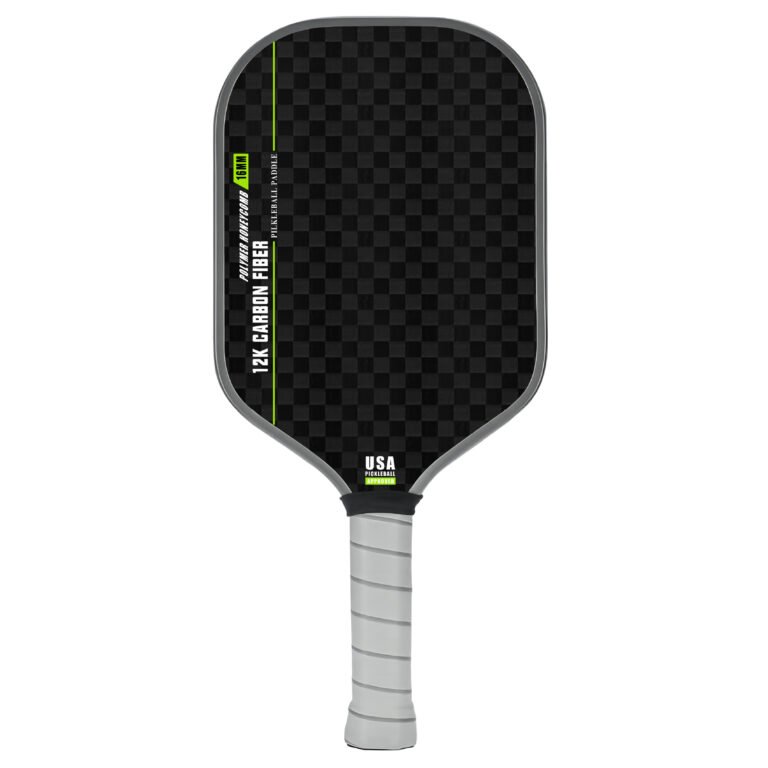
What it is?
- A pickleball paddle made from 12K carbon fiber material.
- The “12K” in 12K indicates that each tow contains 12,000 carbon filaments, making its weaving structure denser than 3K carbon fiber.
- This type of carbon fiber features higher strength and rigidity, making the paddle more solid and durable.
Advantages:
- Superior strength and control: Provides stronger hitting power and better control.
- Enhanced durability: The impact resistance of 12K carbon fiber exceeds that of some other carbon fiber materials, making it less prone to damage over extended use.
- Stability and precision: The paddle is highly stable, suitable for fast-paced play, and enables precise control.
- Ideal for offensive play: Suitable for players who prefer fast-paced attacks and powerful hits.
- Strong hitting performance: 12K carbon fiber delivers excellent rebound and powerful feedback.
Target Users:
- Intermediate and advanced players
- Competitive and offensive players
- Players focusing on power-based gameplay
- Experienced players
Disadvantages:
- Higher cost
- Requires better techniques
- Demands higher physical strength
18k Carbon Fiber Paddle
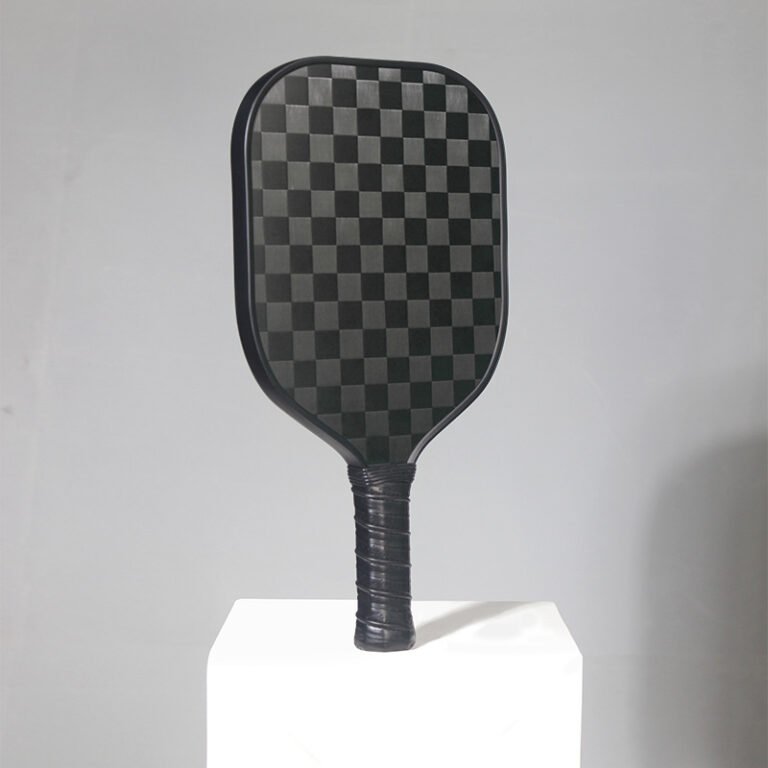
What it is?
- A pickleball paddle made from 18K carbon fiber material.
- The “18K” in 18K indicates that each tow contains 18,000 carbon filaments.
- Due to the denser weaving structure of 18K carbon fiber, it is sturdier, more durable, and performs better than lower-grade carbon fiber materials.
Advantages:
- Superior strength and rigidity: 18K carbon fiber has higher tensile strength and rigidity, resulting in excellent durability.
- Improved stability and hitting control: 18K carbon fiber delivers greater stability and precision when hitting the ball.
- Balanced weight: Despite its strength, 18K carbon fiber is relatively lightweight, ensuring easy handling.
- Enhanced durability and impact resistance: Offers exceptional durability, capable of withstanding prolonged use and intense gameplay.
Target Users:
- Advanced or professional players
- Aggressive attacking players
- Players engaged in long-term training and competitions
- Players who value control and stability
Disadvantages:
- Higher price
- Relatively stiffer paddle
- Requires higher technical skill
Custom Pickleball Paddle
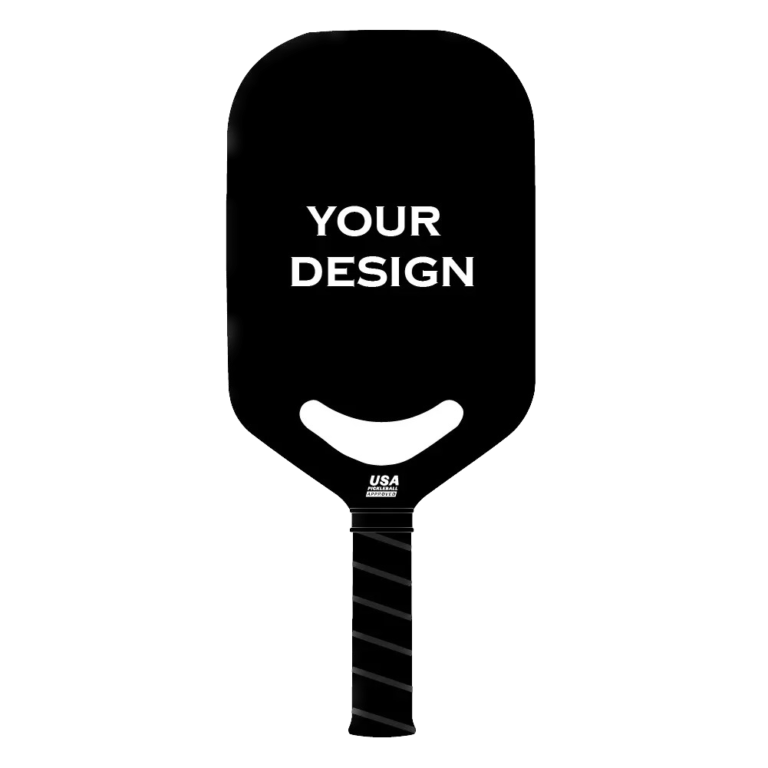

What it is?
The paddle is fully customizable, allowing customers to design all components, including surface, edge guard, grip, and core materials, to meet specific requirements.
Advantages:
- Greater flexibility with a variety of customization options.
- Personalize with your preferred patterns, logos, and designs.
- Adjust paddle dimensions such as weight, thickness, and size for optimal performance.
- Tailored to match different playing styles, from recreational to professional.
- Ideal for branding purposes, enhancing brand visibility with custom logos.
- Offers the ability to choose premium materials like carbon fiber, fiberglass, or hybrid blends.
Gift Pickleball Paddle

What it is?
This premium gift combines practicality with a stylish design, making it the perfect choice for expressing appreciation, gratitude, or thoughtfulness. Whether for friends, family, or business partners, it offers a versatile and memorable option.
Advantages:
- Elegant design and lightweight construction ensure better control for every player, from beginners to professionals.
- Suitable for both daily practice and formal matches, delivering consistent performance.
- A unique gifting option that balances style and functionality.
- Comes in customizable sets, including paddles, balls, and carrying bags.
- Ideal for promoting a brand with the option to print personalized logos and designs.






